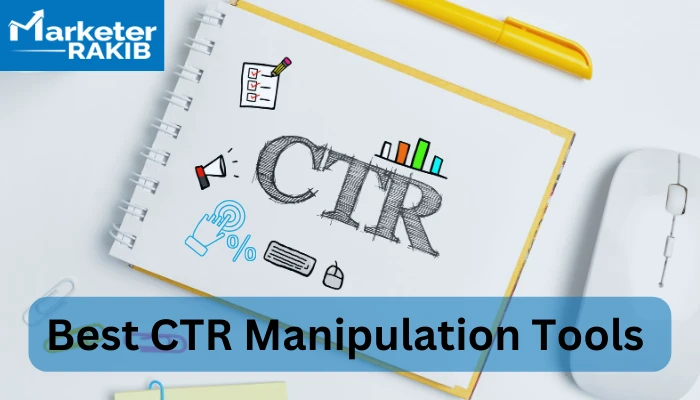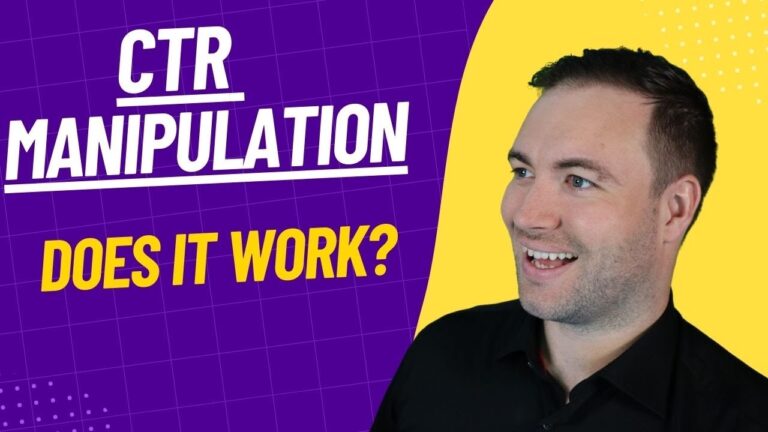Change Your Click-Through Rates with Proven CTR Manipulation Tactics
Wiki Article
Enhancing Organic Click-Through Fees With CTR Manipulation
The optimization of natural click-through rates (CTR) is a nuanced undertaking that depends upon comprehending both customer psychology and reliable content presentation. By leveraging critical manipulation methods, such as incredibly crafted headlines and visually appealing aspects, marketing professionals can significantly improve customer interaction. Nonetheless, the landscape is rife with misunderstandings and oversimplifications regarding what absolutely drives CTR. As we check out the details of these methods, it becomes necessary to discern the underlying principles that can result in sustained success in catching audience interest. What really distinguishes the efficient from the inefficient in this important facet of electronic advertising and marketing?Recognizing Click-Through Fees
Comprehending click-through rates (CTR) is important for assessing the efficiency of internet marketing strategies. CTR gauges the percent of individuals who click on a specific web link or ad compared to the complete variety of users that view it. A greater CTR suggests that the web content is engaging and appropriate to the target audience, while a reduced CTR might signify a need for optimization.To compute CTR, split the variety of clicks by the variety of perceptions and increase by 100. For example, if an advertisement gets 300 clicks out of 10,000 impressions, the CTR would certainly be 3%. This metric is crucial for analyzing different components of digital marketing, consisting of search engine optimization (SEARCH ENGINE OPTIMIZATION), email projects, and social media advertising and marketing.
Furthermore, assessing CTR assists marketing professionals identify which methods yield the finest outcomes and which require improvement. By focusing on boosting CTR, businesses can improve their web content's visibility and efficiency, leading to boosted traffic and prospective conversions. Understanding the nuances of CTR is fundamental for any kind of online marketer intending to maximize their on the internet visibility and take full advantage of return on financial investment (ROI)

The Psychology of User Habits
User behavior is considerably influenced by psychological variables that determine just how individuals engage with on the internet material. Understanding these factors is essential for maximizing click-through prices (CTR) in natural search results page. Cognitive biases, such as the anchoring effect, play a crucial duty fit users' assumptions. When customers experience information, their initial impacts can greatly influence their succeeding judgments regarding relevance and credibility.Emotional actions also substantially impact individual actions. Content that reverberates emotionally can set off a feeling of urgency or interest, motivating users to click. Furthermore, social evidence-- such as user evaluations or rankings-- can boost count on and motivate involvement, as individuals commonly aim to the behaviors of others to notify their very own choices.
Moreover, the principle of deficiency can drive clicks - CTR Manipulation Press Release. Limited-time deals or exclusive content produce a concern of losing out (FOMO), engaging users to act rapidly. Comprehending these emotional vehicle drivers enables online marketers to produce more engaging web content that resonates with their target audience
Efficient CTR Control Methods
Leveraging mental understandings can substantially boost click-through prices (CTR) via targeted adjustment strategies. Among one of the most efficient techniques is the use of compelling headlines that evoke curiosity or urgency. Phrasing titles as questions or including numbers can draw in even more interest, prompting customers to click.Another strategy involves optimizing meta summaries to create a sense of relevance and immediacy. By clearly outlining the advantages or remedies given in the web content, you can involve prospective readers and encourage them to click. In addition, using power words-- such as "special," "proven," or "free"-- can boost the charm of your content.
Aesthetic aspects also play a crucial role. Including distinctive pictures or thumbnails can draw customers in and improve CTR. A/B screening different visuals can help recognize which pictures resonate finest with your audience.
Finally, guaranteeing that your pop over to these guys content guarantees deliverable value brings about higher CTR. They are more most likely to involve when individuals regard that clicking will supply them with meaningful understandings or solutions. By utilizing these techniques thoughtfully, marketers can successfully adjust CTR to their advantage while preserving ethical requirements.
Usual Myths Regarding CTR
A number of false impressions surround click-through rates (CTR) that can lead online marketers to make misdirected choices. While a high CTR recommends that even more customers are clicking, it does not assure sales or conversions.One more typical idea is that CTR is an isolated metric. Actually, CTR ought to be assessed together with various other efficiency signs, such as bounce rate and conversion rate, to gain an all natural sight of campaign success.
In addition, some marketing professionals presume that optimizing for CTR alone suffices. Nonetheless, concentrating solely on CTR can result in clickbait tactics that might draw in clicks but fail to involve users meaningfully. This method can harm brand name credibility and cause lower retention prices
Finally, there is a notion that CTR approaches are universally effective. The fact is that optimal CTR methods can vary significantly throughout sectors and target audiences, demanding customized methods for various market segments. Recognizing these myths is vital for developing efficient CTR strategies that line up with overarching marketing objectives.
Gauging CTR Success
Although high click-through rates (CTR) can suggest effective engagement with material, gauging their true success needs a comprehensive analysis of numerous factors. First, it is vital to understand the context in which the CTR is accomplished. For example, a high CTR on a misleading title may not equate to purposeful involvement or conversions, ultimately showing improperly on the brand name's trustworthiness.Second, assessing the source of website traffic is important. Organic web traffic from search engines can indicate a robust content method, while clicks from irrelevant sources might show a lack of targeting. In addition, measuring the subsequent user behavior is important; evaluating metrics such as bounce rate, time invested in page, and conversion prices can give much deeper understandings right into the high quality of the interaction started by the CTR.

Verdict

you can try these out The optimization of view website natural click-through rates (CTR) is a nuanced undertaking that hinges on recognizing both individual psychology and reliable material discussion. CTR measures the percent of users that click on a certain link or ad contrasted to the overall number of customers who see it. A greater CTR suggests that the web content is engaging and appropriate to the target audience, while a lower CTR may signify a requirement for optimization.
Concentrating exclusively on CTR can lead to clickbait techniques that might attract clicks however fall short to engage customers meaningfully. Additionally, determining the succeeding user behavior is crucial; analyzing metrics such as bounce rate, time invested on web page, and conversion rates can supply much deeper understandings into the high quality of the involvement initiated by the CTR.
Report this wiki page